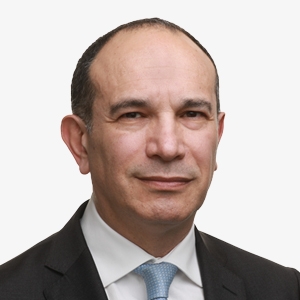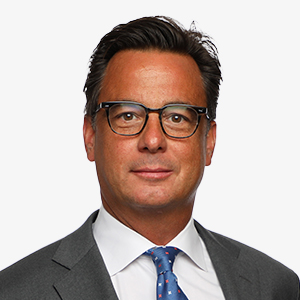In a recent paper, we presented our latest capital market assumptions, adjusted for a new environment of higher interest rates that we expect to be reasonably durable.1 We illustrated how the median expected return for a range of fixed income sectors had shifted upward during 2022, particularly in the U.S. and at the front end of yield curves. Moving European insurance portfolios from their current exposures to these new, higher-yielding exposures is a challenge, however.
The book yields of insurance portfolios declined for more than a decade leading up to 2022. To offset this, many investors split allocations between higher-quality and less capital-intensive sectors like government bonds on the one hand, and higher-returning but illiquid sectors like private credit and private equity on the other. Now that yields have recovered, clients are telling us that they are re-thinking their asset allocations, but they recognize that simply selling existing holdings would involve crystalizing the substantial paper losses that are the corollary of today’s higher yields. Bridging the gap between book yields and market yields is a conundrum that we seek to address in this article.
Speed Required, But Not Haste
The most obvious solution would be simply to re-invest cash flows, thereby avoiding selling existing holdings at a loss.
For life insurance companies, it could take between six and eight years to fully recycle a typical portfolio into new assets in this way. Can they afford to wait that long? Only if current yields will be available that far into the future—which is unlikely, and would in itself create a challenge in the form of more and more competition from savings products offering high rates. More urgently, life companies already face declining sales, rising lapse rates and declining new premiums as their products struggle to compete against other savings options in the higher-rate environment, while general and health insurers face significant claims inflation. Although it faced some specific issues of its own, the recent demise of the Italian insurer Eurovita is a stark illustration of the materialization of concerns like these. We suspect life insurance companies, in particular, are motivated to make up their yield gap more quickly than by simply recycling portfolios via like-for-like re-investment.
That said, there are medium-term credit risks to consider. Credit spreads remain relatively narrow despite signs that tighter monetary policy has begun to slow the economy. Central banks are likely nearer the end of their rate-hiking cycle than the beginning, but we believe structural pressures will keep inflation higher than we have become conditioned to over the past two decades, making the journey back to central bank targets prolonged and difficult. That should sustain high yields, but eventually it will also exert pressure on borrowers.
We don’t see an imminent threat. Only 7% of the global high-yield bond market matures between now and the end of 2024. The average credit rating in the high yield market today is BB, the highest ever. Similarly, issuers with BBB rated balance sheets are larger, more flexible and less cyclical today than they were before the Global Financial Crisis (GFC). Looking out over the next 15 – 24 months, however, we see refinancing difficulties affecting the weaker segments of the market initially, before spreading. Investors would ideally rotate into broader credit exposures only after this turn in the cycle has been established.
With this backdrop and perspective in mind, what should insurers do over the coming year or so?
Life Insurers
Recognizing loss budgets and available excess return provisions are important considerations when reallocating. If re-investing cash flows into investment grade bonds won’t bridge the gap between book and market yields rapidly enough, we believe the market currently offers an opportunity to achieve substantial marginal yield, without upending risk budgets, for those who would consider incurring some degree of realized losses alongside recycling cash flows. We believe the opportunity available today is especially compelling given credit cycle considerations.
Yield curves are not only relatively high at the moment, but also flat to inverted (figure 1). That means a combination of core allocations and extended fixed income sectors, with as much as a third of the assets from the short end of yield curves, can achieve an attractive potential return while shortening risk horizon and maintaining credit quality, as the unknowns of the current credit cycle play out.
Figure 1. Risk-free and Credit Yield Curves Have All Flattened or Inverted
Spread of short-duration yields over long-duration or full-index yields (basis points), Dec 2021 and Apr 2023
Source: FactSet, Neuberger Berman. Yield to worst.
Increasing exposure to sectors such as short-duration emerging markets debt and short-duration high yield can improve the overall yield of the portfolio. They introduce some asset-liability duration mismatch given their short-dated maturities, but they also free up risk budget that can be used to close some of that mismatch potentially with high-quality, higher-yielding private debt investments such as residential whole loans, private placement debt and European private loans. Most of these are investment grade and, in the case of loans and private placements, benefit from enhanced structural protections and covenants relative to public-market bonds.
For a typical life portfolio (figure 2), we estimate that reallocating around 20% of the assets away from significant European government bond and corporate credit exposure into this broader mix could raise a portfolio’s overall estimated annual return from 4.06% to 4.59%, while lowering volatility by a full point and exerting little or no impact on Solvency Capital Requirements. As we mentioned, it could generate some asset-liability mismatches, but we consider this to be a worthwhile risk: in the current European life insurance competitive landscape, policyholder redemptions are raising the importance of liquidity, which comes from the short-duration allocation.
The liquidity and credit quality of this kind of portfolio should also buffer portfolios from defaults and afford investors more flexibility to rotate into wider credit spreads once the cycle has turned.
Figure 2. Re-allocating a Hypothetical Life Insurance Portfolio
Source: Neuberger Berman. For illustrative purposes only.
General and Health Insurers
Inflation is a meaningful headwind for general and health insurers, materializing in the form of the higher nominal value of claims. Over time, they will be able to pass at least some of those higher costs onto new policyholders, but right now it is causing many to re-think portfolio liquidity and sources of return. They tend to have an advantage over life insurers, however, as they do not hold large amounts of long-duration government debt and may have more flexibility to own other asset classes beyond corporate credit.
With better yields now making fixed income competitive against public equities in our capital market assumptions, one notable trend we have seen over the past year is insurers taking long-term profits from equities and recycling the proceeds into short-duration extended credit, such as U.S. corporate credit and emerging markets debt. We believe these allocations have similar return potential to equities, but they consume less risk budget—and we think their volatility is likely to decline still further now that much of the central bank rate-hiking cycle is behind us.
In addition, we think general and health insurers could reduce their core European government and corporate fixed income allocations and re-allocate a portion of those proceeds into short-duration U.S. corporate credit and emerging markets debt, too (figure 3). This would achieve a higher potential return in the fixed income portfolio with a much smaller allocation (77% rather than 87%, in our illustration). The spare allocation can then be invested in sectors such as residential whole loans and even European private loans, which also offer attractive yields while matching longer-dated liabilities and benefitting from enhanced structural protections and covenants relative to public-market bonds.
The overall pick-up in estimated return is again almost 10%: our hypothetical portfolio’s estimated annual return rises from 3.93% to 4.28% by switching almost 40% out of core fixed income and equities and into short-dated extended credit and alternative assets. This gain comes with no change in volatility or market Solvency Capital Requirement, and the portfolio has a profile that should provide a buffer against a turn in the credit cycle.
Figure 3. Re-allocating a Hypothetical General Insurance Portfolio
Source: Neuberger Berman. For illustrative purposes only.
Conclusion: Time to Re-Think
Events during and since the easing of the COVID-19 pandemic have moved fixed income and credit markets substantially in investors’ favor, in terms of both yield and fundamentals. This is particularly the case among high quality asset classes, including those within extended markets. Relative to their credit quality and capital requirements, the yield available today in private fixed income and public sectors such as short duration emerging markets debt is truly attractive.
We think investors should operate on the basis that central banks are out of the zero interest rate and quantitative easing games. The good news is that yields are likely to remain structurally higher than they were over the decade before 2022; the bad news is that a turn in the credit cycle is still likely to be ahead of us, perhaps 15 – 24 months from now.
Re-thinking portfolios on that basis should be a priority for 2023, in our view.
Repositioning is a known challenge, because so many existing holdings represent paper losses that many investors will not want to crystalize. Against this, investors are fortunate to face substantially inverted yield curves, enabling them to generate attractive returns from liquid, short-duration credit exposures. The profile of these exposures opens up risk budget for extended fixed income allocations that can raise estimated returns still further. We think this approach can sustain yields while preparing portfolios for a potential turn in the credit cycle, at which point investors may have an opportunity to rotate again, into wider credit spreads. In this way, we think insurers can make a thoughtful tactical adjustment over the next 15 – 24 months, to set up for yet another opportunity to deploy capital when credit markets are more attractive in spread terms.















